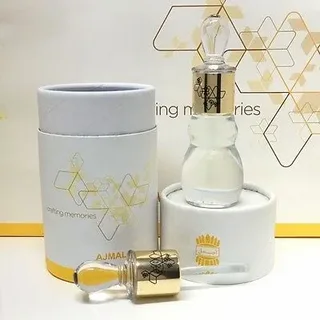Chypre: The Timeless Fragrance Family and Its Luxurious Ingredients
Fragrances have a way of capturing emotions, memories, and personal expressions like no other sense. Among the many fragrance families, Chypre stands as a sophisticated and timeless choice, known for its deep, mossy, and citrusy notes. This legendary olfactory profile has influenced countless perfumes, including modern blends like Coral Perfumes and traditional Middle Eastern treasures like Dahn Al Oud.
This article explores everything about Chypre, from its historical significance and key ingredients to its influence on the world of luxury perfumery. If you’re a fragrance lover, this deep dive will take you on a journey through one of the most elegant scent families in the world.
What is Chypre? A Deep Dive into Its Timeless Appeal
The term Chypre (pronounced “shee-pr”) originates from the French word for Cyprus, an island in the Mediterranean that has been historically associated with perfumes made from local botanicals. The modern concept of Chypre fragrances was popularized in 1917 by François Coty, who introduced a fragrance named “Chypre.” This scent laid the foundation for an entire category of perfumes featuring a signature mix of citrus, floral, and woody-mossy elements.
Why is Chypre So Popular?
- Timeless Appeal – Chypre fragrances are sophisticated and elegant, making them a favorite among perfume connoisseurs.
- Long-Lasting Scents – The combination of earthy and woody notes ensures that the fragrance lingers on the skin for hours.
- Versatile for Any Occasion – Whether for formal events or casual wear, Chypre compositions adapt beautifully to different settings.
- Balanced Complexity – The intricate blend of fresh, floral, and warm elements makes Chypre a well-rounded scent that evolves beautifully over time.
The Signature Composition of Chypre Perfumes
1. The Fresh and Citrusy Opening
Chypre fragrances often start with a burst of citrus, featuring notes like:
- Bergamot
- Lemon
- Orange
- Neroli
This vibrant, uplifting opening gives the perfume an initial freshness before transitioning into its deeper heart notes.
2. The Floral and Spicy Heart
After the citrus top notes fade, Chypre perfumes unfold into a complex floral or spicy heart. Some of the most commonly used middle notes include:
- Jasmine
- Rose
- Ylang-Ylang
- Spices like cinnamon and clove
These floral and spicy elements add warmth and sophistication to the fragrance.
3. The Rich, Woody, and Mossy Base
The final and longest-lasting stage of a Chypre fragrance is its deep and sensual base. These ingredients give Chypre its signature identity:
- Oakmoss – The defining note of Chypre, providing a rich, earthy, and slightly damp aroma.
- Patchouli – Adds a touch of smokiness and mystery.
- Labdanum – A resinous note that enhances warmth and longevity.
- Vetiver – Offers a woody and slightly green nuance.
Chypre’s Influence on Modern Perfumes
Many contemporary Coral Perfumes take inspiration from the Chypre structure, adding tropical and marine accords to make the scent feel fresher and more vibrant. Additionally, Chypre’s influence extends into Middle Eastern perfumery, where ingredients like Dahn Al Oud are blended with the classic Chypre composition for a more exotic and luxurious experience.
Chypre and Coral Perfumes: A New Evolution
Coral perfumes often incorporate fruity and aquatic notes while retaining the elegance of Chypre. These fragrances may feature:
- Watermelon, peach, or pear for a juicy freshness.
- Marine accords that add an oceanic breeze to the scent.
- A Chypre base to maintain depth and longevity.
This combination results in a fragrance that is both modern and classic, perfect for those who enjoy fresh yet sophisticated scents.
The Middle Eastern Influence: Dahn Al Oud and Chypre
Dahn Al Oud, a highly prized perfume ingredient in the Middle East, adds an intense and resinous quality to perfumes. When combined with Chypre, it creates an exotic, rich, and long-lasting fragrance.
- Oud’s Deep Complexity – Oud enhances the mossy Chypre base with its woody and balsamic richness.
- Labdanum and Amber Blends – These ingredients bridge the gap between the smoky warmth of Oud and the earthiness of Chypre.
- Spiced Florals – Jasmine, saffron, and rose elevate the fragrance to luxurious heights.
This fusion of Eastern and Western perfumery traditions results in perfumes that are both mystical and opulent.
Best Chypre Perfumes to Try
If you’re curious to experience the beauty of Chypre firsthand, here are some top picks:
Classic Chypre Perfumes:
- Mitsouko by Guerlain – A timeless, fruity Chypre with peach and oakmoss.
- Chypre de Coty – The original fragrance that started it all.
- Miss Dior (Original) – A floral Chypre with an elegant, feminine touch.
Modern Chypre Perfumes:
- Chanel Coco Mademoiselle – A fresh take on Chypre with citrus and patchouli.
- Tom Ford Noir de Noir – A dark, sensual Chypre with rose and Oud.
- Cartier La Panthère – A floral Chypre with a sophisticated musky base.
How to Choose a Chypre Perfume That Suits You
With so many variations of Chypre available, picking the right one depends on personal preference. Consider these factors:
- For a Fresh and Light Chypre: Look for citrus-forward compositions with bergamot and neroli.
- For a Classic and Elegant Chypre: Opt for perfumes with a strong oakmoss-patchouli presence.
- For a Rich and Luxurious Chypre: Choose a scent with Dahn Al Oud, labdanum, or deep amber accords.
- For a Feminine and Romantic Chypre: Go for floral-infused Chypre perfumes with rose or jasmine.
Final Thoughts on the Chypre Fragrance Family
These perfumes have captivated fragrance lovers for over a century with their timeless and elegant compositions. Whether you prefer a fresh, floral, or deeply woody , there’s a variation for every taste. Modern innovations like Coral Perfumes and the fusion of Dahn Al Oud continue to push the boundaries of perfumery, ensuring that this sophisticated scent family remains relevant in the world of fine fragrances.

